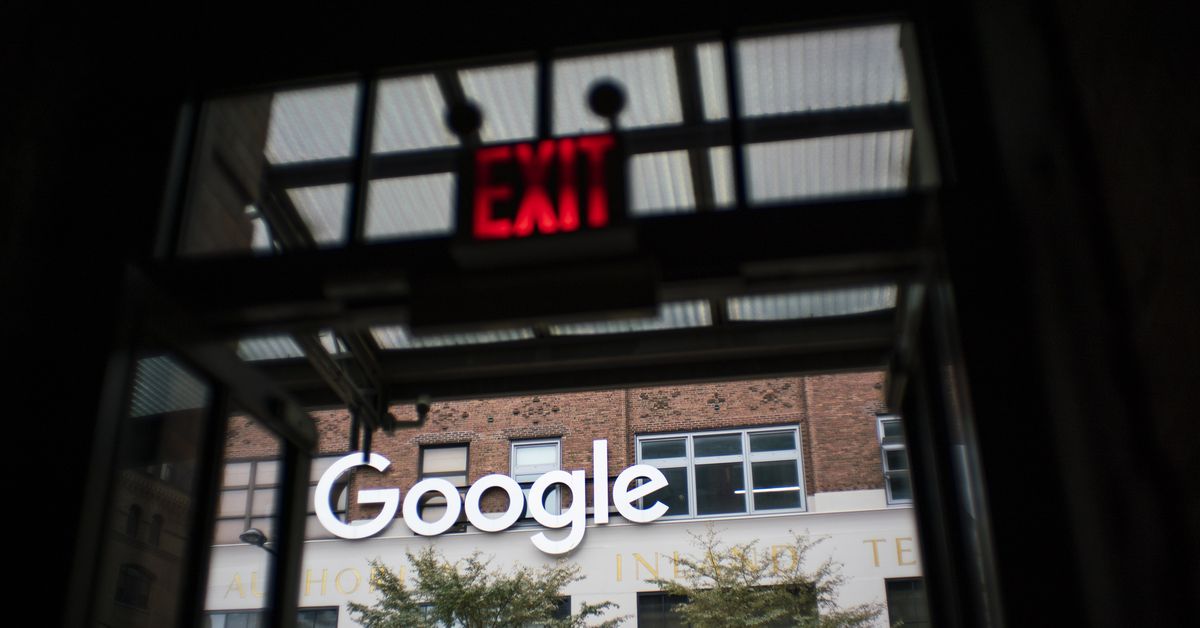Google’s answer to the problems of open plan offices? Inflatable walls
Source: The Verge added 30th Apr 2021Google is redesigning its offices for the post-pandemic world, and The New York Times has a big report full of pictures and videos outlining the company’s plans. But if I had to sum up the tech giant’s approach in two words I would choose “over” and “engineered.” Google has ambitious plans to shake up its offices, but some of them seem needlessly complicated.
As the Times notes, the standard for Silicon Valley offices has long been open plan, with designers and developers working by cheek by jowl in the name of “spontaneous collaboration.” (Though this is often a pretext to cut costs by cramming as many workers into pricey real estate as possible.) But, in a cautious COVID-conscious culture neither cramming nor cubicles can cut it: people want space, man. At least six feet of it.
Here’s the Times, paraphrasing concerns from Google’s VP for real estate and workplace services, David Radcliffe:
In its current office configurations, Google said it would be able to use only one out of every three desks in order to keep people six feet apart. Mr. Radcliffe said six feet would remain an important threshold in case of the next pandemic or even the annual flu.
Psychologically, he said, employees will not want to sit in a long row of desks, and also Google may need to “de-densify” offices with white space such as furniture or plants. The company is essentially unwinding years of open-office plan theory popularized by Silicon Valley — that cramming more workers into smaller spaces and taking away their privacy leads to better collaboration.
This makes sense! But Google’s approach to implementing these changes in its Mountain View offices are a mixed bag. Here are some of the methods mentioned:
- Instead of rows of desks and meeting rooms, Google will use “Team Pods” containing “[c]hairs, desks, whiteboards and storage units on casters” that can be “wheeled into various arrangements, and in some cases rearranged in a matter of hours”
- To create temporary divides between open plan desks, the company is testing inflatable robot walls that can be wheeled around and blown up like a bounce house.
- “[A] fabric-based overhead air duct system that attaches with zippers and can be moved over a weekend for different seating arrangements.”
- To accommodate remote workers in meetings, a new semi-circular “campfire” meeting room alternates seats for those physically present with screens for those calling in.
- More outdoor work and meeting spaces, with tables and chairs in open-air tents.
- To make hot-desking easier, Google is testing a workstation that remembers users’ settings, adjusting the local temperature and height and tilt of the monitor based on a worker’s card swipe. It even “brings up family photos on a display” for that cubicle feeling.
- Optional “leaf-shaped partitions” called “petals” can be attached to desks to “to eliminate glare” and office chairs with built-in speakers in the headrest will play white noise “to muffle nearby audio.”
Again, some of these sound great. Who wouldn’t want more outdoor space in their office or meeting rooms that are more welcoming for remote workers? But the focus on modularity and adaptiveness seems like a recipe for disaster. The mix of inflatable privacy shields, fabric air ducts, dynamic hot-desks, clip-on desk partitions, and rearrangeable desks and storage make it sound like employees will have to build their office from scratch each day.
Indeed, some of these solutions are trying to solve problems that only exist in the first place because of open plan offices. You don’t need speakers blasting white noise at your head or removable partitions to reduce glare if you’ve got a room of your own to work in.
I’m sure the Times is playing up some of these more bizarre elements, and it’s not like Google employees are known for the hardships they face. (Play a tune on an appropriately-sized violin for the closure of the company’s complimentary massage rooms.) But it does baffle me somewhat that such complicated solutions need to be created in the first place. Maybe old-fashioned offices (with appropriate ventilation) could be the answer? Specially if you don’t have to fit in as many employees because more are working from home.
I may be alone in this, but I’ve always quite fancied a genuine, honest-to-goodness, walls-and-a-door office of my own. That was true pre-pandemic and it’ll be true post-pandemic, too. Ironically, it’s only being forced to work remotely that’s meant I’ve created a decent working space in my own home for the first time. If only I could get the same at the office.
brands: ACTION Alone Built Decent First Google Hot It local New Office One Silicon Solutions Space Swipe Team WAS media: 'The Verge' keywords: Audio Google Sound Speakers
Related posts
Notice: Undefined variable: all_related in /var/www/vhosts/rondea.com/httpdocs/wp-content/themes/rondea-2-0/single-article.php on line 88
Notice: Undefined variable: all_related in /var/www/vhosts/rondea.com/httpdocs/wp-content/themes/rondea-2-0/single-article.php on line 88
Related Products
Notice: Undefined variable: all_related in /var/www/vhosts/rondea.com/httpdocs/wp-content/themes/rondea-2-0/single-article.php on line 91
Warning: Invalid argument supplied for foreach() in /var/www/vhosts/rondea.com/httpdocs/wp-content/themes/rondea-2-0/single-article.php on line 91
